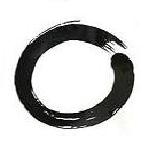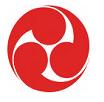Bunbukan The Institute of Classical Japanese Budo Culture |
文武館 - 古典日本武道文化研究会
THE BUNBUKAN 文 武 館
BUN 文 literary or written word
BU 武 military or martial
KAN 館 hall
BUNBUKAN – The hall of martial study
The kanji BU is made up of two characters, one showing halberds
crossing, indicating fighting; and another character meaning to stop.
Therefore the true meaning of Bu is to stop fighting, so the Bunbukan is
a hall where one studies how to stop fighting.
The
Bunbukan, the Institute of Classical Japanese Budo Culture, was founded
by Chris Rowen Shihan in the early 90’s to preserve, promote and
disseminate the aspects of Koryu Karatedo ( old style empty hand way ),
such as etiquette, respectfulness and the spiritual side, as followed by
Gogen Yamaguchi Hanshi ( Rowen Shihan’s teacher ) and his peers. It is
these principles that the Bunbukan is trying to preserve and carry on
and bring to a wider audience.
The first Bunbukan dojo was near London’s Liverpool Street. This dojo was formally known as the London Goju Ryu Karate Centre. At this dojo Rowen Shihan regularly invited instructors from other martial art traditions and styles to teach his students, as well as allowing other systems access to training facilities. This he did following on from the similar practice carried out by his own teacher in Japan.
Recognising
a common bond between all martial arts and martial artists, Rowen
Shihan changed the name of the dojo to Bunbukan to encourage not just
Goju Ryu karate practitioners, but also any other martial artists
wanting to study traditional Budo to come and be part of his
organisation.
The Honbu dojo moved to Winchester in 2006.
The MON (badge / crest) of the Bunbukan incorporates two things:

The
black outer edge represents the ENSO, meaning circle. It is perhaps the
most common subject of Japanese calligraphy. Some artists draw Enso
“closed”, while others leave an opening in the circle, symbolising that
the Enso is not separate, but is part of something greater. Enso
symbolises enlightenment, strength, elegance, and the universe, and is
an "expression of the moment". The Enso is one of the deepest symbols in
Japanese Zen: a symbolic representation encompassing the universe in an
endless, cyclical line it said to show the true nature of existence and
enlightenment. It is a symbol that combines the visible and the hidden,
the simple and the profound, the empty and the full.

| BACK TO TOP |
| NEXT PAGE |